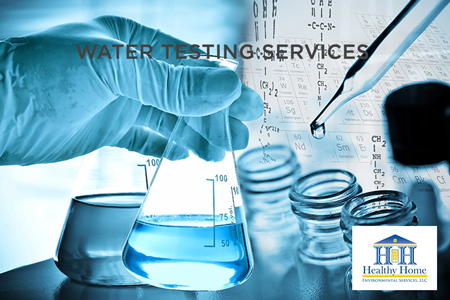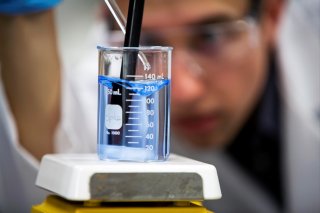Why You Should Pick Our Water Testing Service for Your Home
Why You Should Pick Our Water Testing Service for Your Home
Blog Article
Learn Just How Water Testing Can Identify Impurities and Safeguard Your Household's Health
Comprehending the relevance of water screening is vital for securing your family members's health, as our water can harbor hidden threats. From germs to heavy steels, contaminants posture major threats, often undetected without appropriate analysis. By discovering the auto mechanics of water testing, one can discover the unseen threats lurking in relatively immaculate water resources. Yet, how do you determine which tests are required for your home, and what steps should be taken once potential hazards are exposed? As we browse these questions, the path to making sure water safety and security and a much healthier living atmosphere comes to be clearer.
Importance of Water Checking
Acknowledging the vital role water plays in maintaining life, the importance of water testing can not be overemphasized. Water is an essential resource, necessary for drinking, cooking, hygiene, and different industrial processes. Its quality straight affects public health and wellness and wellness. Making certain that water is free from dangerous compounds is important for keeping healthy and balanced neighborhoods and ecosystems.
Water testing acts as a proactive procedure to recognize prospective dangers that might endanger water top quality. Through systematic analysis, it helps spot physical, chemical, and biological specifications that can posture risks to human health and wellness. Routine screening permits the early discovery of concerns, facilitating prompt treatments to avoid widespread contamination and associated health and wellness problems.
Furthermore, water testing supports governing conformity, making certain that water service providers satisfy recognized security standards and guidelines set by governmental authorities. It fosters transparency and accountability, building public count on in the water supply system. In addition, screening supplies important data that notifies water management techniques, allowing sustainable use and conservation of this precious source.
Fundamentally, water screening is a crucial tool that safeguards public health, makes certain regulative adherence, and advertises the lasting management of water sources. Its importance in shielding both communities and people can not be underestimated.
Usual Water Pollutants
Amongst the different components that can jeopardize water top quality, common water impurities include a series of physical, chemical, and biological materials that pose considerable risks to human wellness and the environment. Physical pollutants typically entail sediments or organic products suspended in water, which can impact quality and taste. Chemical impurities include a vast array of compounds, consisting of chemicals, herbicides, steels like lead and mercury, and industrial chemicals. These chemicals can infiltrate water materials with farming drainage, commercial discharges, or leaching from pipes and storage containers.
Organic pollutants, largely germs, viruses, and protozoa, develop from human and animal waste going into water systems. Pathogens such as E. coli, Giardia, and Cryptosporidium are notorious for causing gastrointestinal health problems and can be specifically hazardous to little ones, the senior, and those with jeopardized body immune systems. Nitrites and nitrates, commonly originating from plant foods, present another health risk, particularly to babies, possibly bring about problems like methemoglobinemia or "blue baby disorder."
Furthermore, arising impurities, including drugs and individual treatment products, have elevated issues due to their perseverance and unidentified lasting effects. Understanding these impurities is critical for carrying out efficient water treatment approaches and making certain risk-free drinking water.
How Water Testing Functions
Recognizing the range of contaminants in water underscores the relevance of efficient screening approaches to protect public health and wellness. Water testing is an organized procedure created to recognize and measure different contaminations that view could position risks to human health and wellness.
When samples are accumulated, they undertake laboratory evaluation making use of different methods. Chemical screening often involves spectrometry or chromatography, both of which can determine and measure details chemical substances. For microbiological screening, techniques such as membrane purification or enzyme substrate examinations are utilized to detect pathogenic microbes. Additionally, physical characteristics like turbidity, ph, and color are examined to offer insight into the total quality of the water.
The precise approaches employed in water testing rely on the specific impurities of problem and the water's intended use. By consistently applying these extensive testing procedures, researchers and public wellness officials can ensure the safety and top quality of water, consequently securing communities from potential wellness dangers.
Selecting the Right Test
How does one determine one of the most proper water test for their demands? Picking the best examination includes understanding both the particular characteristics of the water resource and the possible pollutants that may exist. The first action is evaluating the water resource-- be it local, well, or surface water-- as each has unique risks. Local water might need testing for disinfectant by-products, while well water might need testing for nitrates, germs, and hefty metals.
Next, take into consideration recent events and environmental aspects. Close-by farming tasks could demand testing for pesticides and herbicides, image source whereas industrial zones can call for look for chemical toxins. In addition, any modifications in water appearance, odor, or taste ought to prompt particular testing for common impurities like lead, chlorine, or organic virus.
Specialist water screening solutions use extensive sets that target a wide variety of possible contaminants. These kits typically line up with criteria set by the Environmental Protection Firm (EPA) or regional health and wellness departments. For a much more customized approach, talking to a water top quality professional can offer insights right into which certain examinations are essential based on regional concerns and specific health and wellness needs, guaranteeing the protection of your house's wellness.

Keeping Water Safety And Security

In addition to testing, appropriate upkeep of water supply plays a vital role. This includes examining and servicing plumbing systems, storage tanks, and septic tanks to protect against leakages or backflow that could introduce pollutants - Water Testing Service. Employing water purification systems developed to attend to specific regional problems can further safeguard against impurities, giving an added layer of defense
Public recognition and education and learning are just as vital in maintaining water security. Neighborhoods ought to be notified concerning possible threats connected with neighborhood water resources and the essential actions to alleviate them. Encouraging public engagement in water safety campaigns fosters a collective duty that improves overall performance.
Eventually, an extensive approach that incorporates routine screening, system upkeep, and community participation is essential in safeguarding water high quality. By doing so, families can be ensured of tidy and risk-free water, protecting their wellness and wellness.

Conclusion
Regular water screening is necessary for determining pollutants such as germs, heavy metals, and chemicals that posture wellness threats. By examining water samples, unseen risks can be found, making sure the stipulation of risk-free drinking water. This positive strategy assists develop a much healthier environment and promotes informed decision-making relating to water safety and security. Selecting proper screening methods and keeping vigilance in water top quality are essential action in protecting public wellness and guaranteeing the health of all household members.
Understanding the relevance of water screening is important for protecting your household's health and wellness, as our water supply can harbor hidden threats.Water testing serves as a proactive measure to identify possible dangers that may compromise water high quality.Furthermore, water screening sustains regulatory conformity, making certain that water suppliers satisfy established safety standards and guidelines established by governmental authorities. Municipal water could call for screening for disinfectant by-products, while well water might require testing for nitrates, germs, and heavy metals.
Normal water testing is an essential component in keeping the quality of water resources, enabling prompt interventions prior to impurities reach hazardous degrees.
Report this page